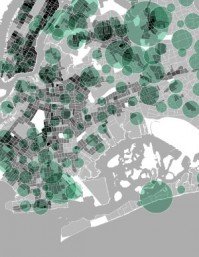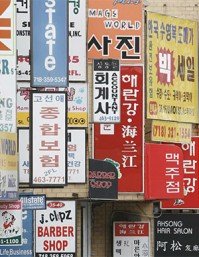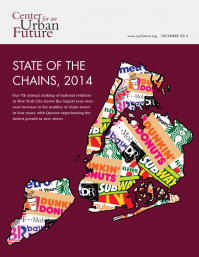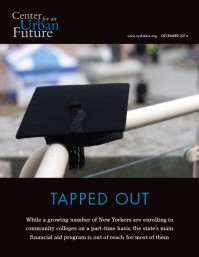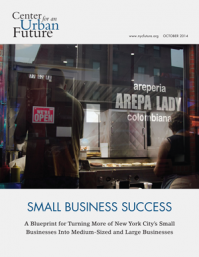Commentary/Op-Ed - March 2015
Tap Reform: Part-Time College Students Need Financial Aid TooIn this op-ed in City & State , CUF researcher Christian González-Rivera argues that while Governor Cuomo has put education at the forefront of his Opportunity Agenda, his plan is missing a door to opportunity for the large and growing number of part-time college students in New York who struggle to finish their degree with almost no access to financial aid.
Testimony - February 2015
Leveraging Libraries in the 10-Year Capital PlanNow that the de Blasio Administration is breathing new life into the 10-year capital plan, public libraries have an important role to play. In testimony before the City Council’s Committees on Finance, Cultural Affairs & Libraries, CUF research director David Giles lays out what could be done.
Data - January 2015
New York State’s Language BarrierNearly every corner of New York State is experiencing a spike in immigrants—with the fastest growth occurring upstate—but funding for ESOL classes has not kept pace.
Report - December 2014
State of the Chains, 2014Our 7th annual ranking of national retailers in New York City shows the largest year-over-year increase in the number of chain stores in four years, with Queens experiencing the fastest growth in new stores.
Commentary/Op-Ed - December 2014
Libraries of the FutureIn this op-ed in City & State, CUF’s Jonathan Bowles and Jeanette Estima highlight some of the visionary ideas presented by design teams at our December 4th conference to re-imagine and rethink New York City’s branch libraries.
Commentary/Op-Ed - December 2014
Tap Into Part-Time StudentsIn this op-ed in Albany's Times Union, the Center’s Christian González-Rivera and Jonathan Bowles argue that at a time when a postsecondary credential is more critical than ever for economic success, public officials should modify the state’s Tuition Assistance Program (TAP) to allow more grants to go to part-time students. Doing so would benefit tens of thousands of poor and working poor students, who are now effectively barred from financial aid because of their part-time enrollment.
Commentary/Op-Ed - December 2014
Green Light for Career Pathways in New York CityFollowing the report released by the Jobs for New Yorkers Task Force last month, the Center’s Tom Hilliard offers four recommendations to help the de Blasio administration make lasting cultural changes toward a career-focused workforce system and succeed in fulfilling the bold vision laid out in the report.
Commentary/Op-Ed - December 2014
Fulfilling the Promise of the Jobs for New Yorkers Task ForceCUF workforce fellow David Jason Fischer calls the final report by the Jobs for New Yorkers Task Force the “most ambitious workforce reform effort ever undertaken by an American city,” and in this commentary, he provides his own observations and recommendations for how the city can fully capitalize on the possibilities of this moment for positive change.
Report - December 2014
Tapped OutWhile a growing number of New Yorkers are enrolling in community colleges on a part-time basis, the state’s main financial aid program is out of reach for most of them.
Testimony - December 2014
A Long-Term Capital Plan to Transform NYC’s Branch LibrariesAt a December 2014 hearing before the New York City Council Committee on Cultural Affairs, Libraries and International Intergroup Relations, CUF Research Director David Giles argues that creating a long-term capital plan for New York’s libraries would not only address the staggering maintenance needs of the city’s 207 branches, but also equip libraries to further the agenda of the de Blasio administration and meet the needs of communities throughout all five boroughs.
Testimony - December 2014
A Call for Re-Examining New York’s Tuition Assistance ProgramCUF Research Associate Christian González-Rivera testified before the New York State Assembly’s Committee on Higher Education in December 2014 on how the state's Tuition Assistance Program (TAP) effectively bars thousands of part-time students from financial aid and gave recommendations for how TAP requirements could be modified to include more part-time students and increase their graduation rates.
Testimony - December 2014
Making “Career Pathways” a RealityCUF workforce fellow David Jason Fischer testified about the Jobs for New Yorkers Task Force report before the New York City Council’s Committees on Community Development, Economic Development and Civil Service and Labor. In his testimony, Fischer provided his perspective on the challenges for implementing the report's recommendations within the city’s current workforce development system.
Testimony - November 2014
Planning for New York’s Aging Immigrant PopulationIn this testimony before a joint hearing of the New York City Council’s committees on aging and immigration, CUF research associate Christian González-Rivera details what city agencies and nonprofit organizations need to do to better serve New York’s rapidly growing population of older immigrants.
Commentary/Op-Ed - November 2014
De Blasio’s time to lead on librariesIn this op-ed in the New York Daily News, the Center’s David Giles argues that the de Blasio administration should commit to a 10-year capital plan to address the library systems’ $1.1 billion in pressing capital needs and re-invigorate the city’s long-neglected branches.
Data - November 2014
NYC’s Growing Self-Employed PopulationNew York City is now home to nearly a quarter million self-employed workers, and this segment of the workforce increased by 31 percent between 2000 and 2012. As of 2012, 6.5 percent of the city’s working adults were self-employed, up from 5.7 percent in 2000.
Report - November 2014
Small Business SuccessA blueprint for turning more of New York City's small businesses into medium-sized and large businesses.
Commentary/Op-Ed - November 2014
A New Day at HRAThough the Human Resources Administration places more New Yorkers into jobs than any other city agency, providing clients with the support they need to find long-term employment has not been a priority for nearly 20 years. As new Commissioner Steven Banks prepares to take the agency in a new direction, CUF workforce fellow David Fischer outlines three principles for success.
Testimony - November 2014
A call to sustain New York’s economic vitality by improving infrastructureAt a November 2014 hearing before the New York City Council Committee on Economic Development and Transportation, the Center’s Adam Forman highlighted how improving New York’s infrastructure is vital to sustaining the city’s economic vitality, and proposed three ways that public officials could begin rehabilitating city-wide infrastructure.
Commentary/Op-Ed - October 2014
City Must Act to Close MTA Funding GapIn this op-ed in the Gotham Gazette, the Center’s Adam Forman argues that with almost half of the MTA’s five year capital budget still unfunded, Mayor Bill de Blasio and City Council should not only put pressure on Albany, but also allocate more city dollars in order to close the $15.2 billion funding gap as the city’s direct contribution to MTA has fallen from $950 million in 1989 to less than half of that in 2013.
Commentary/Op-Ed - September 2014
Fostering Better OutcomesMayor de Blasio is signing important legislation to find out and publicly report how foster youth fare in adulthood. But the city also needs to commit to acting on what it learns.


